As he crawled under a makeshift shelter on the banks of the Pitt River in British Columbia, Jared Roessle knew something had to change. Addicted to crystal meth, he had lost his job, his apartment and his car, leaving him homeless and living under a tarp. “Every time it would rain, it was just a big mud pit,” he says. “One night, I was totally soaked. I had no money, I had nowhere to go. I cried out to God, 'I can't do this anymore.' ”
The next day, he went to a friend's house, hoping she would give him some food and cigarettes. When she opened the door and saw him, barely 115 pounds, with a black eye, she started to cry. “She said, 'I don't want to give you money, but I know a place you can go,' ” he recalls.
Seeking Acceptance
Growing up in a conservative, Christian home—“My mom tried to protect me from everything,” he says—Roessle felt unprepared for the new freedom of high school.
“People would ask if I wanted to go smoke a joint, and I was like, 'What's that?' ” he says. “I was totally naive.” Like many young people, he wanted to fit in. “Everyone wants to feel like they belong. But I looked for acceptance in all the wrong places.” A nice car, cool clothes, the right crowd—it brought attention from girls, approval from friends— and addiction.
In 2003, Roessle's mother passed away. When his father remarried, they sold the house and Roessle needed to move out. He found a job and an apartment, but by this point, “I was full-blown into my addiction,” he says. “It lasted about six months before everything unravelled.” In the space of a week, he lost everything.
Not knowing anything about homeless shelters or social services, he started living outside, until the day he showed up on a childhood friend's doorstep, and she told him about a Christian discipleship and recovery program nearby.
Identity in Christ
Although Roessle grew up going to church every Sunday, “it was just something you did. It didn't really mean anything to me,” he says. “I didn't have a relationship with God.”
Unlike secular treatment programs, this one included a strong focus on spiritual identity and the roots of addiction. “It focused on who you are in Christ, and dealing with the problems that led you to that point in the first place,” he says. “Mine was seeking acceptance.”
In the first three months, “I heard things about the gospel that I'd never heard in my life,” he says. “About what Christ did for me, what he went through to take my sin.” When he felt unworthy because of his past, he learned that not accepting Christ's sacrifice meant he would have died in vain. “So we can stand before God blameless, because of what he's done for us. He's given us healing and forgiveness, grace and mercy.”
The recovery centre was built on an old rock quarry. “When I tell my testimony, I always like to quote Psalm 40:2, 'He lifted me out of the slimy pit, out of the mud and mire; he set my feet on a rock and gave me a firm place to stand,' ” he says. “Because that's exactly what he did in my life. I was literally in mud, and he put me on a rock.”
“I've Been There”
After completing the one-year program, Roessle worked in the intake office for another three years. When the time came to move on, he heard about a new Salvation Army facility opening in Langley, the Gateway of Hope. He was hired as a support worker for the emergency shelter, where he's on the front lines helping people who have nowhere else to go.
“I've been there. I know how hard it is to be in that situation,” he says. “Every time it rains, I thank God that I've got a place to stay, because I know what it feels like—being in the rain, and not having anywhere to go, and not knowing how to stay dry.”
But even more than that, he knows there's hope. “That's one of the biggest things that happened in my life. I had no hope at all. But coming to know Christ, and what he's done for us—there is hope. Not just in this life, but in the life to come.
“It's sharing the gospel with people who need it. This is such an opportunity to reach people, because a lot of the people who come here are at the end of their rope. They want change. And I want them to know that change is possible. I'm the testimony of that.”
Faces of Hope
The Gateway of Hope is the only emergency shelter in Langley, B.C.—but it's more than a homeless shelter. “The community comes to our doors on a daily basis,” says executive director Emmy Skates. “For shelter, for a meal, for help with household supplies, for medical services—and we're able to connect them with care and support.”
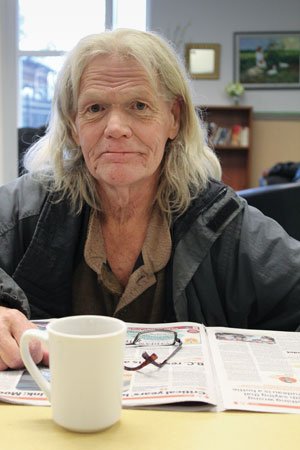 Brian came to Gateway of Hope's emergency shelter with his wife, Shirley, after losing their apartment. “Our rent is $725 a month, and our income is $870. By the time the dust settles, that's hardly $10 a month to eat. It doesn't work,” he says. “But we have an advocate now, to help us apply for disability.” Since January 2015, more than 900 people have stayed at the shelter, which can
Brian came to Gateway of Hope's emergency shelter with his wife, Shirley, after losing their apartment. “Our rent is $725 a month, and our income is $870. By the time the dust settles, that's hardly $10 a month to eat. It doesn't work,” he says. “But we have an advocate now, to help us apply for disability.” Since January 2015, more than 900 people have stayed at the shelter, which can
accommodate 22 men and 10 women. Gateway of Hope also serves 350 meals a day, including the shelter, community meal and meals on wheels program.
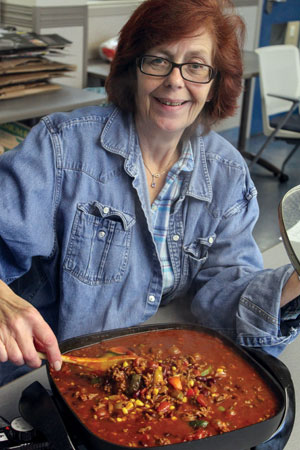 Terry participates in Skillet 101, a community kitchen program that teaches people to cook healthy, affordable meals. After staying in the shelter, Terry moved into the Opportunities Program, which offers supportive housing. More than 200 people have entered the program since it began in 2010. For residents that stay at least six months, about 70 percent are able to find permanent, market housing. “I had nowhere to go. I was on the streets for two days. I've never been in that position in my life—it was really scary,” says Terry. “Now I'm taking floral design courses, and I'm hoping to find employment in a flower shop. I've always loved gardening. Everything is working out so well. My life has turned around completely. But without Gateway and the advisors here, I don't think I would have made it.”
Terry participates in Skillet 101, a community kitchen program that teaches people to cook healthy, affordable meals. After staying in the shelter, Terry moved into the Opportunities Program, which offers supportive housing. More than 200 people have entered the program since it began in 2010. For residents that stay at least six months, about 70 percent are able to find permanent, market housing. “I had nowhere to go. I was on the streets for two days. I've never been in that position in my life—it was really scary,” says Terry. “Now I'm taking floral design courses, and I'm hoping to find employment in a flower shop. I've always loved gardening. Everything is working out so well. My life has turned around completely. But without Gateway and the advisors here, I don't think I would have made it.”
The next day, he went to a friend's house, hoping she would give him some food and cigarettes. When she opened the door and saw him, barely 115 pounds, with a black eye, she started to cry. “She said, 'I don't want to give you money, but I know a place you can go,' ” he recalls.
Seeking Acceptance
Growing up in a conservative, Christian home—“My mom tried to protect me from everything,” he says—Roessle felt unprepared for the new freedom of high school.
“People would ask if I wanted to go smoke a joint, and I was like, 'What's that?' ” he says. “I was totally naive.” Like many young people, he wanted to fit in. “Everyone wants to feel like they belong. But I looked for acceptance in all the wrong places.” A nice car, cool clothes, the right crowd—it brought attention from girls, approval from friends— and addiction.
In 2003, Roessle's mother passed away. When his father remarried, they sold the house and Roessle needed to move out. He found a job and an apartment, but by this point, “I was full-blown into my addiction,” he says. “It lasted about six months before everything unravelled.” In the space of a week, he lost everything.
Not knowing anything about homeless shelters or social services, he started living outside, until the day he showed up on a childhood friend's doorstep, and she told him about a Christian discipleship and recovery program nearby.
Identity in Christ
Although Roessle grew up going to church every Sunday, “it was just something you did. It didn't really mean anything to me,” he says. “I didn't have a relationship with God.”
Unlike secular treatment programs, this one included a strong focus on spiritual identity and the roots of addiction. “It focused on who you are in Christ, and dealing with the problems that led you to that point in the first place,” he says. “Mine was seeking acceptance.”
In the first three months, “I heard things about the gospel that I'd never heard in my life,” he says. “About what Christ did for me, what he went through to take my sin.” When he felt unworthy because of his past, he learned that not accepting Christ's sacrifice meant he would have died in vain. “So we can stand before God blameless, because of what he's done for us. He's given us healing and forgiveness, grace and mercy.”
The recovery centre was built on an old rock quarry. “When I tell my testimony, I always like to quote Psalm 40:2, 'He lifted me out of the slimy pit, out of the mud and mire; he set my feet on a rock and gave me a firm place to stand,' ” he says. “Because that's exactly what he did in my life. I was literally in mud, and he put me on a rock.”
“I've Been There”
After completing the one-year program, Roessle worked in the intake office for another three years. When the time came to move on, he heard about a new Salvation Army facility opening in Langley, the Gateway of Hope. He was hired as a support worker for the emergency shelter, where he's on the front lines helping people who have nowhere else to go.
“I've been there. I know how hard it is to be in that situation,” he says. “Every time it rains, I thank God that I've got a place to stay, because I know what it feels like—being in the rain, and not having anywhere to go, and not knowing how to stay dry.”
But even more than that, he knows there's hope. “That's one of the biggest things that happened in my life. I had no hope at all. But coming to know Christ, and what he's done for us—there is hope. Not just in this life, but in the life to come.
“It's sharing the gospel with people who need it. This is such an opportunity to reach people, because a lot of the people who come here are at the end of their rope. They want change. And I want them to know that change is possible. I'm the testimony of that.”
Faces of Hope
The Gateway of Hope is the only emergency shelter in Langley, B.C.—but it's more than a homeless shelter. “The community comes to our doors on a daily basis,” says executive director Emmy Skates. “For shelter, for a meal, for help with household supplies, for medical services—and we're able to connect them with care and support.”
 Brian came to Gateway of Hope's emergency shelter with his wife, Shirley, after losing their apartment. “Our rent is $725 a month, and our income is $870. By the time the dust settles, that's hardly $10 a month to eat. It doesn't work,” he says. “But we have an advocate now, to help us apply for disability.” Since January 2015, more than 900 people have stayed at the shelter, which can
Brian came to Gateway of Hope's emergency shelter with his wife, Shirley, after losing their apartment. “Our rent is $725 a month, and our income is $870. By the time the dust settles, that's hardly $10 a month to eat. It doesn't work,” he says. “But we have an advocate now, to help us apply for disability.” Since January 2015, more than 900 people have stayed at the shelter, which can
accommodate 22 men and 10 women. Gateway of Hope also serves 350 meals a day, including the shelter, community meal and meals on wheels program.
 Terry participates in Skillet 101, a community kitchen program that teaches people to cook healthy, affordable meals. After staying in the shelter, Terry moved into the Opportunities Program, which offers supportive housing. More than 200 people have entered the program since it began in 2010. For residents that stay at least six months, about 70 percent are able to find permanent, market housing. “I had nowhere to go. I was on the streets for two days. I've never been in that position in my life—it was really scary,” says Terry. “Now I'm taking floral design courses, and I'm hoping to find employment in a flower shop. I've always loved gardening. Everything is working out so well. My life has turned around completely. But without Gateway and the advisors here, I don't think I would have made it.”
Terry participates in Skillet 101, a community kitchen program that teaches people to cook healthy, affordable meals. After staying in the shelter, Terry moved into the Opportunities Program, which offers supportive housing. More than 200 people have entered the program since it began in 2010. For residents that stay at least six months, about 70 percent are able to find permanent, market housing. “I had nowhere to go. I was on the streets for two days. I've never been in that position in my life—it was really scary,” says Terry. “Now I'm taking floral design courses, and I'm hoping to find employment in a flower shop. I've always loved gardening. Everything is working out so well. My life has turned around completely. But without Gateway and the advisors here, I don't think I would have made it.”
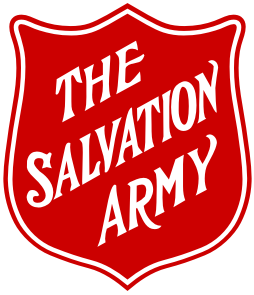




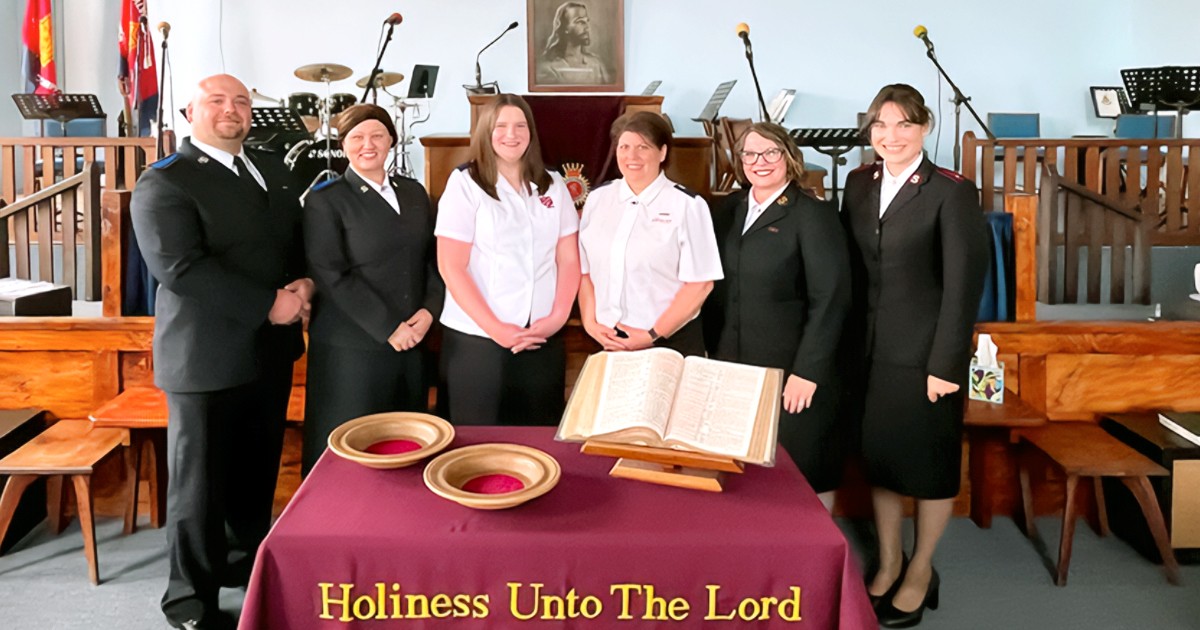
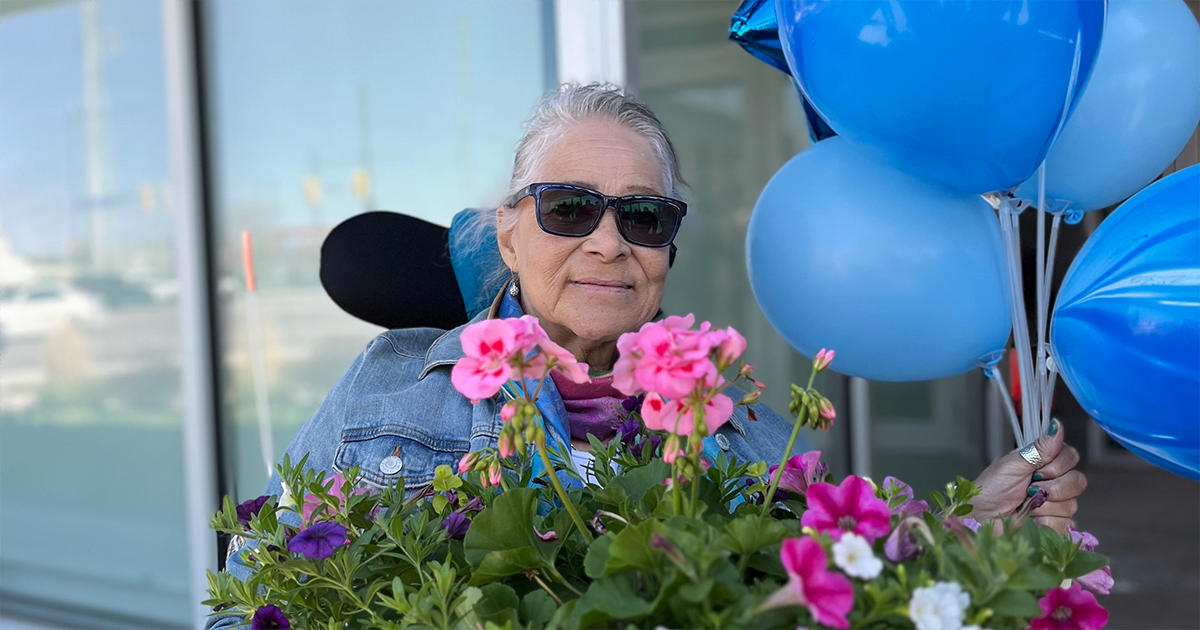
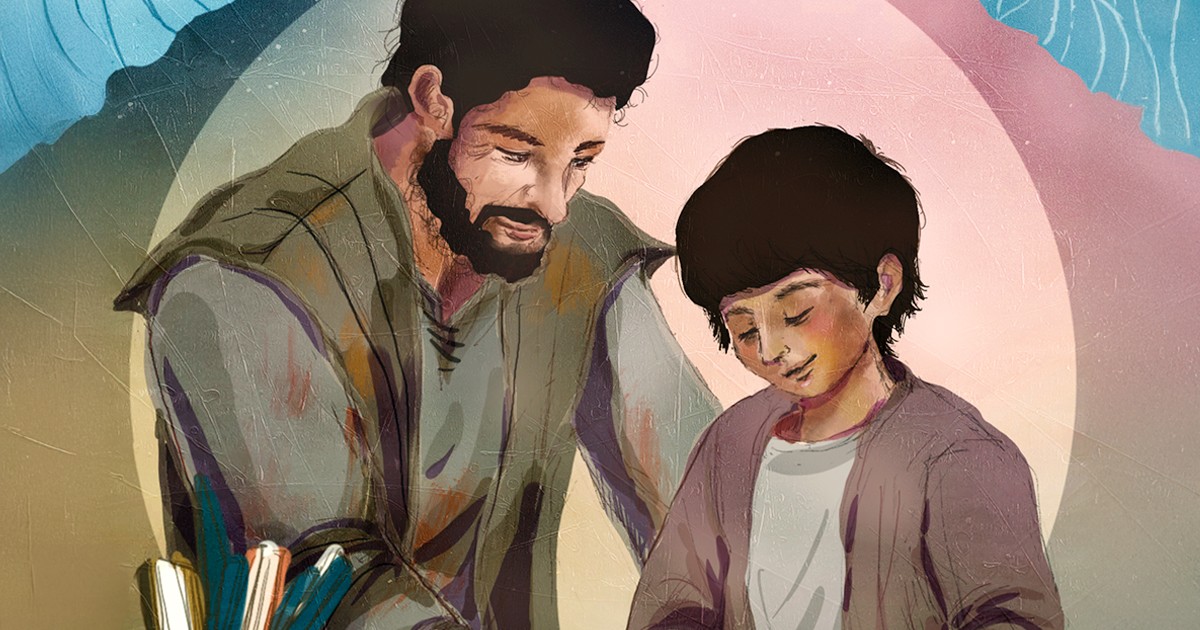


Leave a Comment